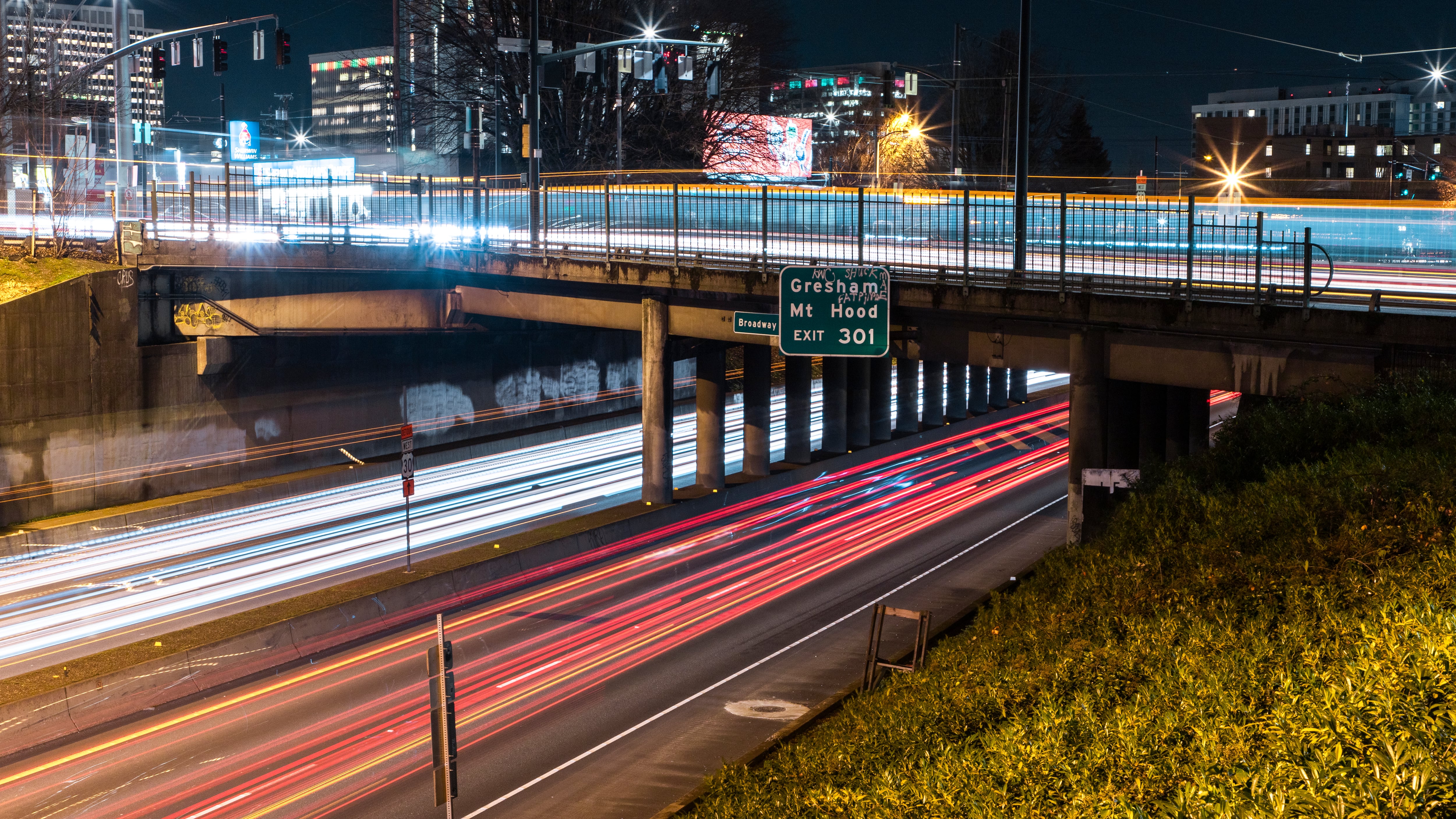As expected, the Oregon Transportation Commission today approved a new design for widening and capping the I-5 freeway at the Rose Quarter—with a significant condition.
The five-member commission agreed on what’s called the Hybrid 3 model, one of a number of configurations that planners had drawn up.
The difference is, the Hybrid 3 model includes larger freeway caps capable of supporting three-story buildings. Advocates for repairing the damage done to the historically Black Albina neighborhood when I-5 was built in the 1960s have fought for larger caps as a way of knitting the neighborhood’s streetscape back together.
Environmentalists, led by the group No More Freeways, dislike the project because they believe adding a lane on each side of I-5 would add capacity and therefore increase traffic. They want the Oregon Department of Transportation to study congestion pricing—charging motorists variable tolls to use the highway, depending on the time of day, which they say would achieve ODOT’s congestion relief goals without expensive and polluting lane expansions.
The OTC today also put a higher price tag on the project—and laid out the potential for its failure by requiring that local governments pay to cover the new, higher costs.
When the project was originally proposed after the Legislature’s passage of a transportation funding package in 2017, ODOT estimated the cost of widening at $500 million. It increased that cost estimate to a range of $715 million to $795 million in January 2020. Today, the commission said the cost of the Hybrid 3 model would be $1.2 billion to $1.25 billion. That’s the highest price tag yet and far more than the Legislature appropriated for the project in 2017.
“It is our duty to ensure that this project stays on schedule and offers the best return on investment of public dollars,” OTC vice chair Alando Simpson said in a statement. “Our focus must continue to be on putting a finance plan together to deliver the project, and that will require additional funding from other governmental partners.”
So how does that happen?
The OTC told ODOT staff to come back with a funding proposal by Dec. 1 that includes significantly more than the $500 million to $700 million available from the state.
The commission directed ODOT to include specific information in the funding plan, including (1) an estimate of the amount of dedicated funding needed to build the project and (2) “a discussion of whether a viable plan to secure that dedicated funding from federal, state and/or the city of Portland, Metro, Multnomah County, TriMet and other organizations in Portland is reasonably likely to be authorized and appropriated by July 1, 2023.”
Given that neither the city, Metro nor the county has shown much enthusiasm for the project and TriMet doesn’t have a lot of extra cash lying around, developing that funding plan will be a tall order and seemingly dependent on federal funding, which is far from a sure thing.
As ODOT scrambles to pull the money together over the next three months, No More Freeways will press forward with a lawsuit seeking to force ODOT to prepare a full environmental impact statement on the project, which has changed substantially since ODOT completed a more limited environmental assessment.

